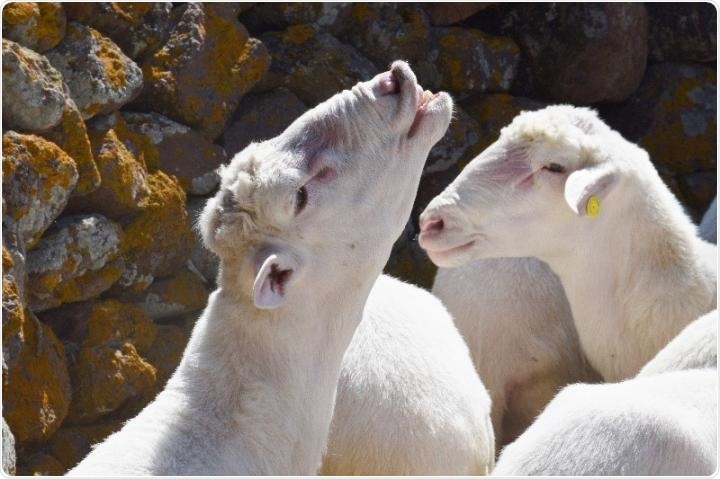Bluetongue virus (BTV) is a livestock disease that can lead to devastating health and economic outcomes, but despite this fact, it can be challenging to establish its origin.

Sheep are particularly susceptible to bluetongue virus (BTV) infection. The BTV-8 outbreak in Europe caused severe losses of sheep and considerable damage to the farming industry. Image Credit: Ciriaco Ligios.
But according to a study published recently in PLOS Biology, an open-access journal, the latest re-emergence of BTV in France could have been triggered by human activities, based on the unfamiliar genetic composition of the virus.
Bluetongue virus is a pathogen that infects cattle and sheep, and in the last 20 years, it has caused damages to the European farming sector, amounting to billions of euros.
In the latest study, headed by scientists from the UK-based University of Glasgow along with a consortium of European collaborators, the study’s authors compared the virus’ genomes both before and after it emerged again in France in the year 2015.
In 2006, BTV initially affected Europe from unknown sources but was brought under control through large-scale vaccination in 2010; since then, no new cases have been reported until it resurfaced in 2015.
The genome study performed by the authors showed that during the two outbreaks in 2006 and 2015, BTV built up new mutations in a way anticipated for a quickly evolving virus.
But during the period between the two outbreaks, the scientists observed an unusual lack of mutations, which indicated that the virus was probably not spreading at that time.
The similarity of genes between the re-emergent and original viruses indicates that the 2015 outbreak was triggered by an infectious material that somehow emerged from the initial outbreak.
The persistence of the virus over numerous years in the absence of genetic variations would affect one’s interpretation of virus biology.
The authors debated that a more reasonable scenario is that the virus re-emerged after being kept in frozen samples. Since embryo transfer and artificial insemination are extensively used in the livestock sector, this transmission mechanism must be assessed by upcoming analysis.
In order to survive, to be transmitted and to find new hosts, viruses need to replicate. New mutations are an inevitable consequence of this, so viruses can’t remain ‘frozen in time’. While there is still lots for us to learn about virus biology, the most plausible explanation for our findings is that exposure to infectious material, stored from the earlier outbreak, caused the most recent emergence of this virus in Europe.
Massimo Palmarini, Study Senior Author and Professor, University of Glasgow
Source:
Journal reference:
Pascall, J. D., et al. (2020) “Frozen evolution” of an RNA virus suggests accidental release as a potential cause of arbovirus re-emergence. PLOS Biology. doi.org/10.1371/journal.pbio.3000673.